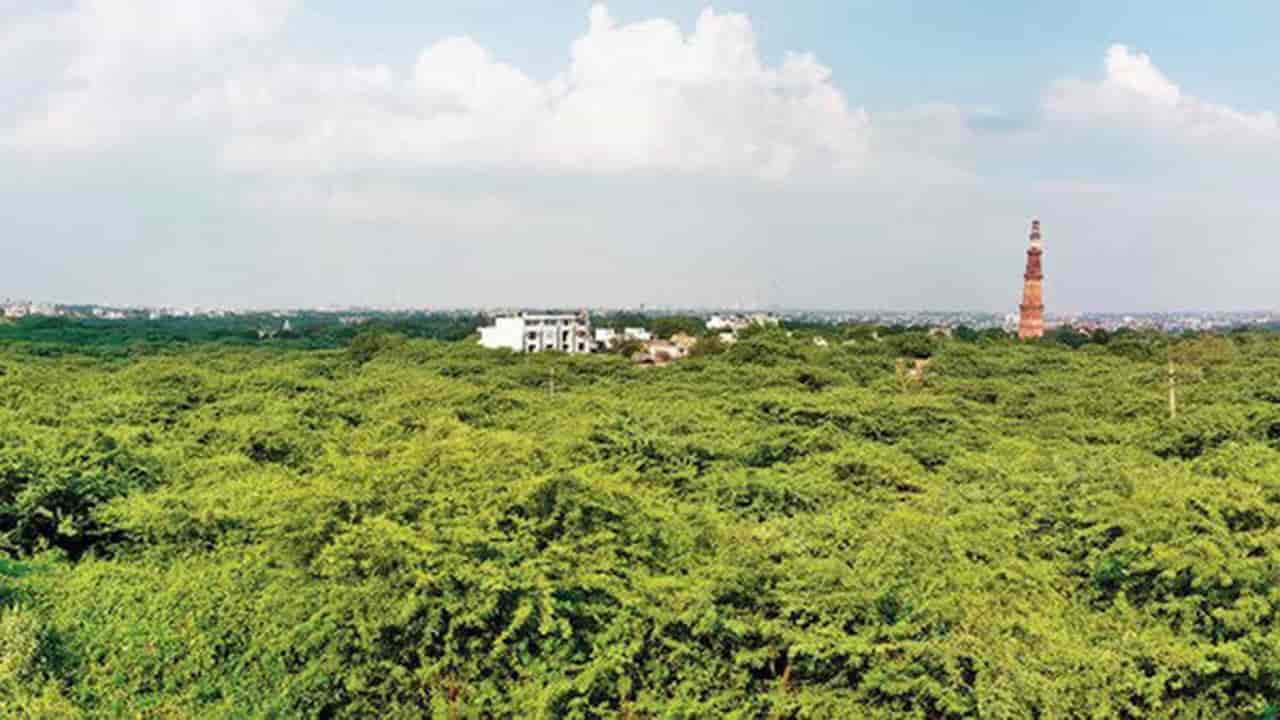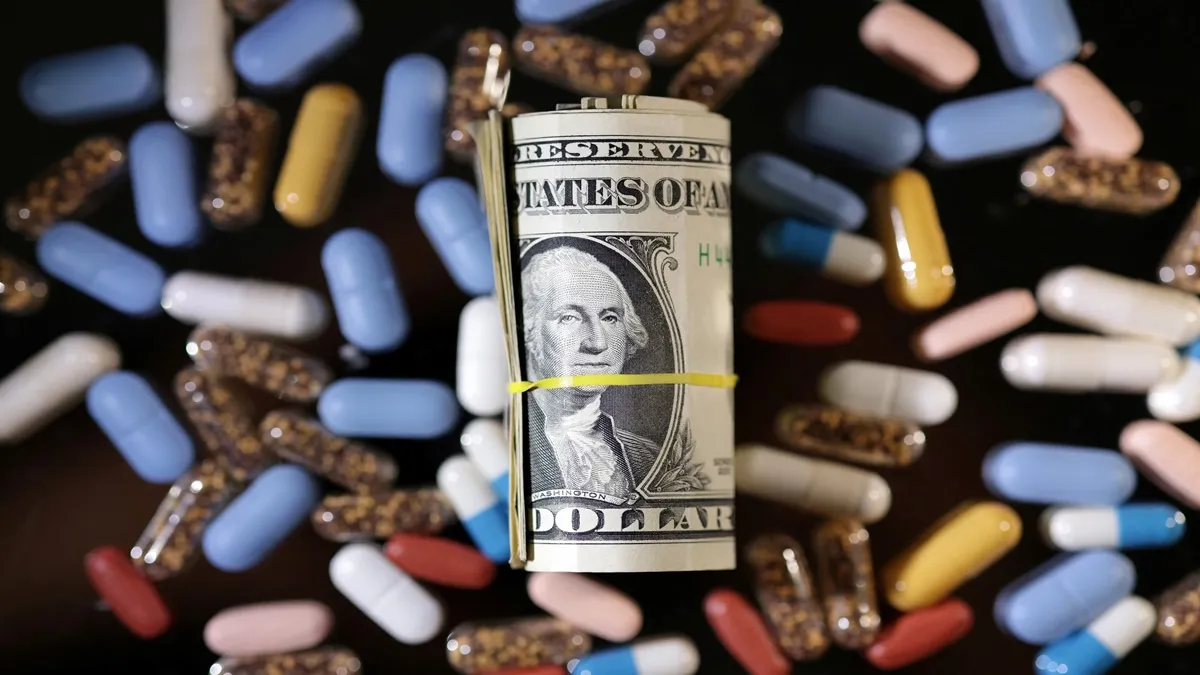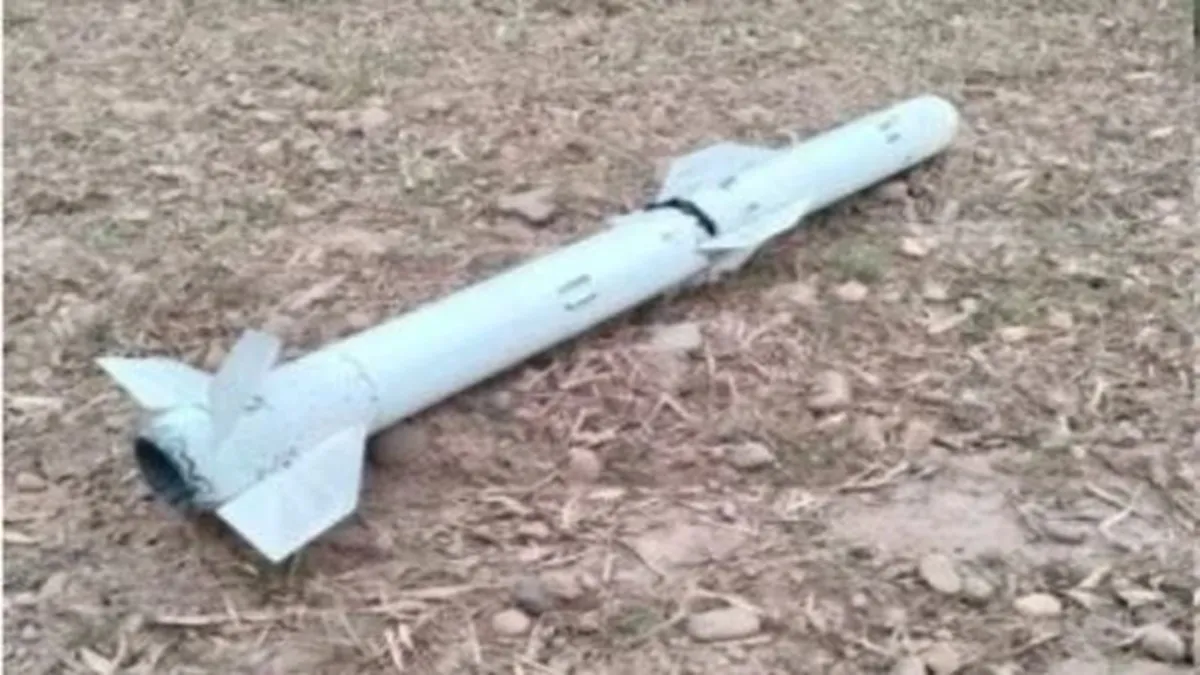- Courses
- GS Full Course 1 Year
- GS Full Course 2 Year
- GS Full Course 3 Year
- GS Full Course Till Selection
- Online Program
- GS Recorded Course
- NCERT (Recorded 500+ Hours)
- Polity Recorded Course
- Geography Recorded Course
- Economy Recorded Course
- AMAC Recorded Course
- Modern India, Post Independence & World History
- Environment Recoded Course
- Governance Recoded Course
- Science & Tech. Recoded Course
- International Relations and Internal Security Recorded Course
- Disaster Management Module Course
- Ethics Recoded Course
- Essay Recoded Course
- Current Affairs Recoded Course
- CSAT
- 5 LAYERED ARJUNA Mentorship
- Public Administration Optional
- ABOUT US
- OUR TOPPERS
- TEST SERIES
- FREE STUDY MATERIAL
- VIDEOS
- CONTACT US
INDIA INVOKES THE PEACE CLAUSE 5TH TIME IN A ROW
INDIA INVOKES THE PEACE CLAUSE 5TH TIME IN A ROW
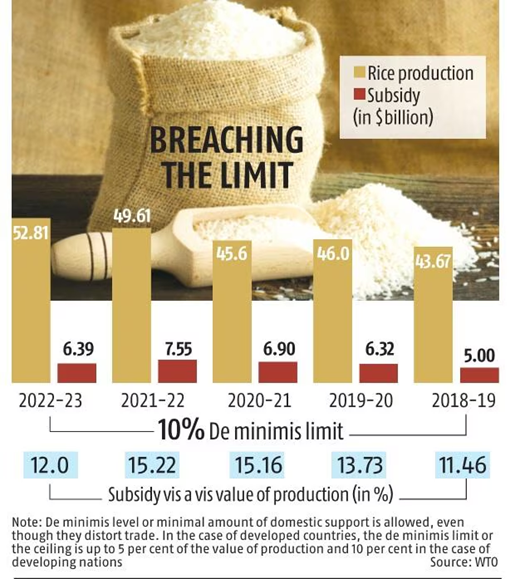
- India has invoked the peace clause at the World Trade Organization (WTO) for the fifth consecutive time for the marketing year 2022-23 (October-September) due to breaching the prescribed subsidy limit for rice offered to its farmers.
- While the value of India’s production of rice was $52.8 billion in 2022-23, a subsidy worth $6.39 billion was given to farmers during the year, India notified to the WTO.
- This means the rice subsidy was 12% of the value of production, thereby breaching the 10% domestic support ceiling, which is in accordance with global trade rules.
|
However, there is no immediate repercussion for the breach since India has invoked the “peace clause”, agreed upon at the Bali ministerial of WTO in 2013. This provides immunity to developing countries from challenges for breaching the ceiling for wheat and rice until a permanent solution is found. |
- In its written submission at the WTO, India defended itself by stating that stocks under the programme were “acquired and released in order to meet the domestic food security needs of India’s poor and vulnerable population, and not to distort trade or adversely affect the food security of other Members”.
What is Peace Clause at the WTO ?
The Peace Clause is a mechanism established at the World Trade Organization (WTO) to address the issue of developing countries exceeding their prescribed subsidy limits for certain agricultural products, such as rice. Under the Peace Clause, WTO members agreed to refrain from challenging any breach in the prescribed ceiling by a developing nation at the dispute settlement forum of the WTO.
- The Peace Clause was initially adopted as an interim measure at the WTO's Bali Ministerial Meeting in December 2013. It has been renewed several times since then, and it remains in effect until a permanent solution is found to the food stockpiling issue.
Key Aspects of the Peace Clause:
- Subsidy Ceiling: Under global trade norms, a WTO member country's food subsidy bill should not exceed 10 percent of the value of production based on the reference price of 1986-88.
- Subsidies Over the Ceiling: Subsidies above the prescribed ceiling are viewed as trade-distorting and can potentially harm the interests of other WTO members.
- Peace Clause Mechanism: The Peace Clause provides developing countries with temporary relief from the legal consequences of exceeding their subsidy limits. It allows them to continue providing subsidies to their farmers without facing legal challenges at the WTO.
- Notification Requirements: Developing countries invoking the Peace Clause are subject to certain notification requirements and conditions. They must notify the WTO of their decision to invoke the Peace Clause and provide detailed information about their subsidy programs.
- Food Security of Other Members: Developing countries invoking the Peace Clause must ensure that their subsidy programs do not adversely affect the food security of other WTO members. They must take steps to mitigate any potential negative impacts on the food security of other countries.
While the peace clause provides temporary relief from legal challenges to developing countries, it is important to note that it is not a permanent solution. WTO members are committed to negotiating a permanent solution to the issue of food storage and agricultural subsidies.
FAQs:
Q1: What is the World Trade Organization (WTO)?
The World Trade Organization (WTO) is an intergovernmental organization that regulates and facilitates international trade. It was founded on January 1, 1995, and is headquartered in Geneva, Switzerland. The WTO has 164 member nations and 25 observer nations.
The WTO's main function is to help producers of goods and services, as well as exporters and importers, protect and manage their businesses. The WTO's goals include:
- Establishing and enforcing international trade rules
- Providing a forum for negotiating and controlling further trade liberalization
- Resolving trade disputes
- Improving the transparency of decision-making processes
- Collaborating with other major international economic institutions involved in global economic management.
In WTO terminology, subsidies are identified by “Boxes” which are given the colors of traffic lights:
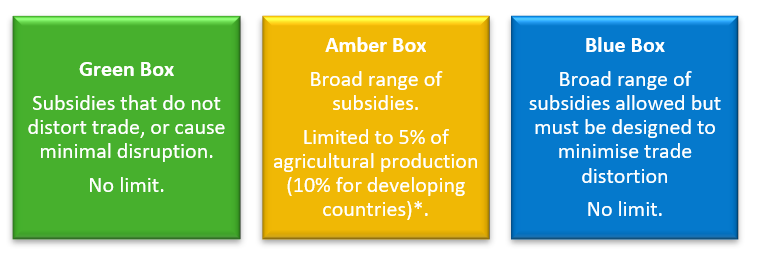
|
Green box |
A green box is a type of subsidy that is exempt from reduction commitments and can be increased without financial limitation. Green box subsidies are government-funded and must not involve price support. They include fixed payments to producers for environmental programs, such as:
The Green Box applies to both developed and developing country members. The general criteria for the Green Box are that the measures must have no, or at most minimal, trade-distorting effects. |
|
Amber box
|
WTO) defines the amber box as domestic support measures that are considered to distort production and trade, with some exceptions. The amber box is defined in Article 6 of the Agriculture Agreement as all domestic supports except those in the blue and green boxes. The amber box is also known as the Aggregate Measurement of Support (AMS). The amber box refers to subsidies that can make a country's products cheaper than other countries' products, which can distort international trade. Examples of amber subsidies include: electricity, seeds, fertilizers, irrigation, and minimum support prices. Members who do not make these commitments must keep their amber box support within 5-10% of their value of production. |
|
Blue box |
The term "Blue Box" refers to a type of domestic support or subsidy under the World Trade Organisation's Agriculture Agreement. Subsidies in the blue box are linked to programmes that limit production by imposing production quotas or encouraging farmers to set aside land for other uses.
|

